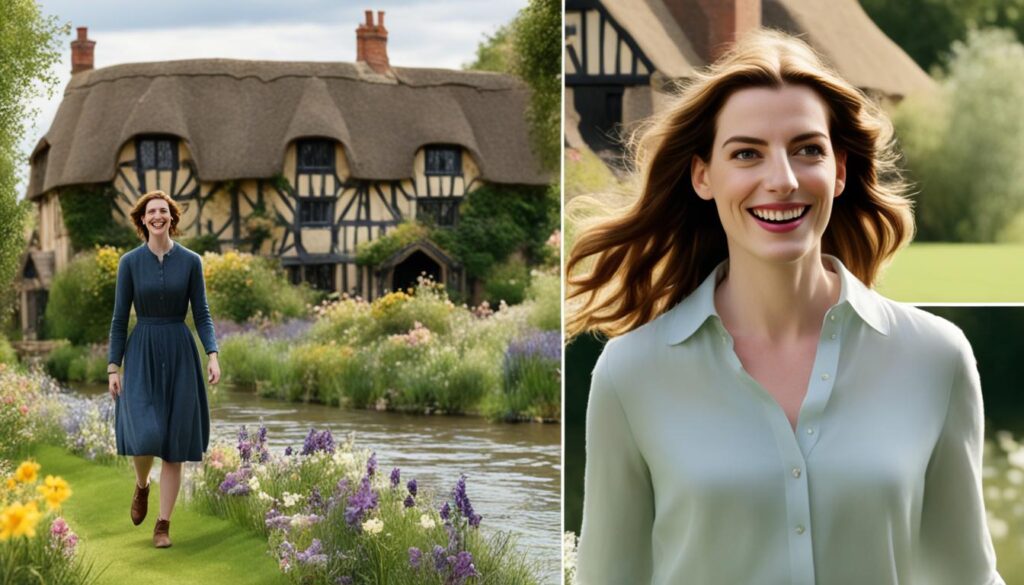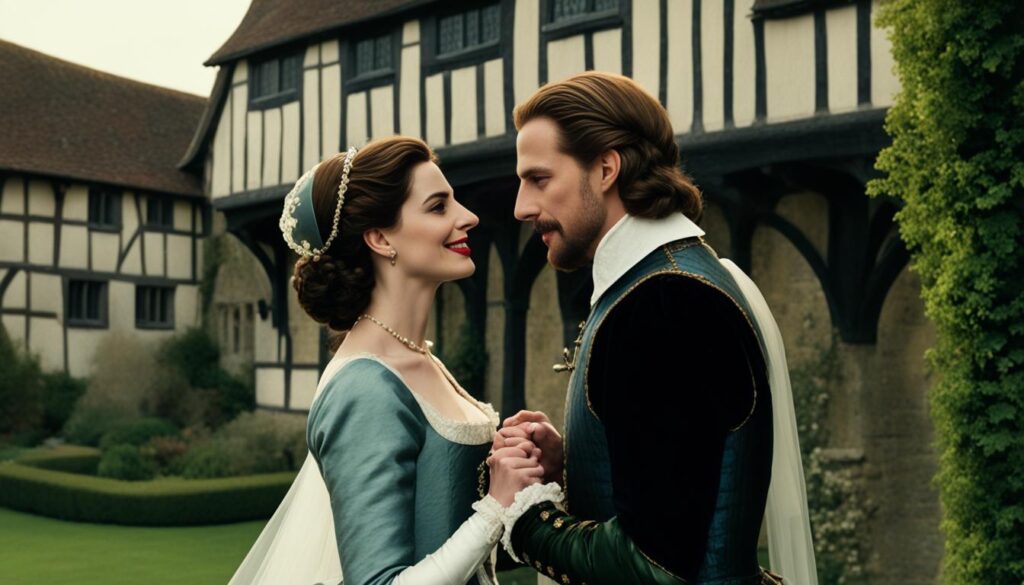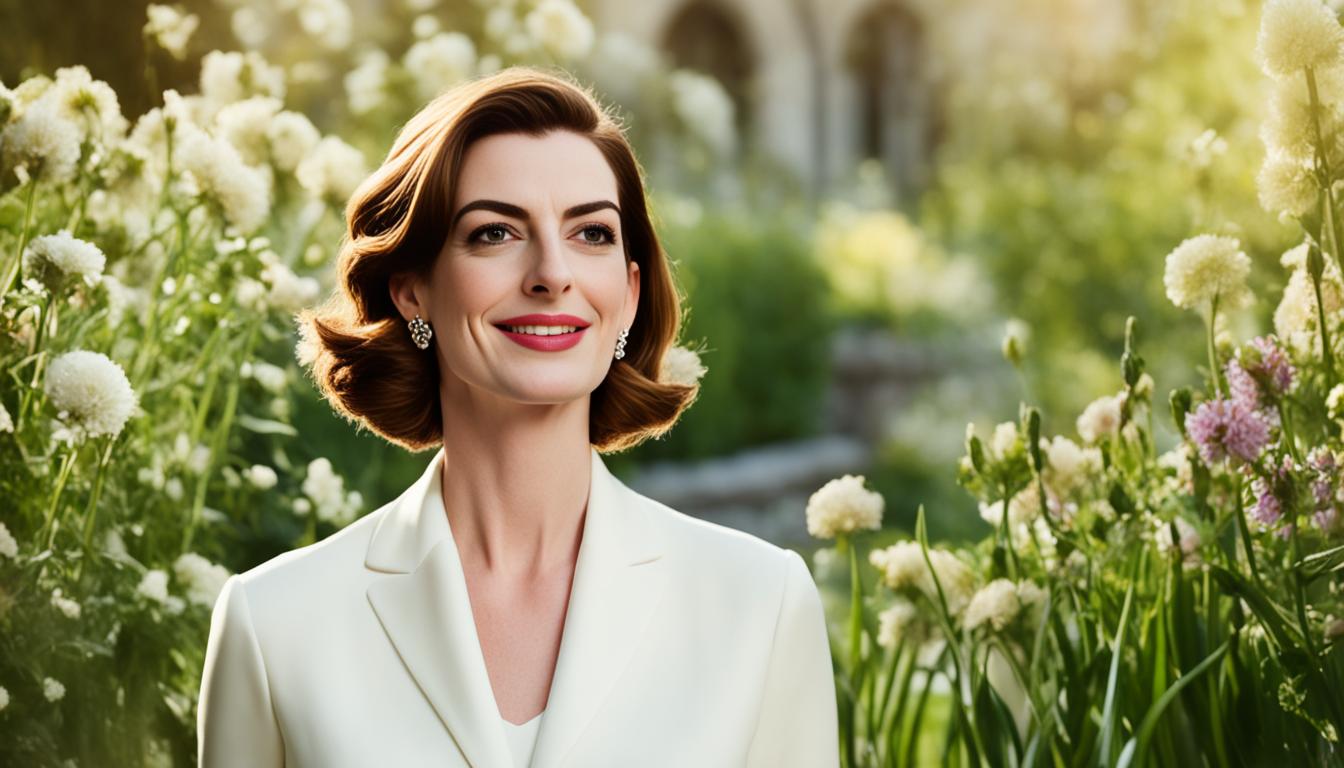In the world of literary biographies, few stories captivate like the romance between William Shakespeare and his older wife, Anne Hathaway. Their union stands out as a fascinating example of age gap relationships in the Elizabethan era.
Anne Hathaway was born in 1556 in Shottery, a quaint village near Stratford-upon-Avon. She lived in a farmhouse now known as Anne Hathaway’s Cottage. When she married Shakespeare in 1582, Anne was 26, while Shakespeare was just 18.
Their marriage sparked curiosity about Elizabethan era marriages and how they differed from today’s norms. Despite the age difference, the couple built a life together. They raised three children in the midst of Shakespeare’s growing fame.
Key Takeaways
- Anne Hathaway was born in 1556, eight years before Shakespeare
- The couple married in 1582 when Anne was 26 and Shakespeare was 18
- Anne grew up in Shottery, near Stratford-upon-Avon
- Their marriage produced three children: Susanna and twins Hamnet and Judith
- Anne outlived Shakespeare by seven years, passing away in 1623
The Early Life of Anne Hathaway: Shakespeare’s Older Wife

Anne Hathaway, Shakespeare’s wife, was born in a farmhouse in Shottery, near Stratford-upon-Avon. Her childhood home is now a famous spot for tourists. It shows what life was like during the Tudor Period.
Her dad, Richard Hathaway, was a respected farmer. He was well-known in Early Modern English society. This meant he could leave Anne a small inheritance for her future.
The Hathaway family kept their home for 13 generations. In 1892, the Shakespeare Birthplace Trust bought it. This helped save a piece of Stratford-upon-Avon’s history. Anne, also known as Agnes, was seen as a great catch back then.
This might surprise us today, as Anne was eight years older than William. But in those times, women often married around 26.
Anne’s life shows us what it was like to be a writer’s spouse back then. Her story makes us rethink how we see age and marriage in Shakespeare’s era. It shows us that Early Modern English society had its own set of customs and expectations.
A Whirlwind Romance: Shakespeare and Hathaway’s Marriage
In November 1582, William Shakespeare and Anne Hathaway got married. Their marriage showed how common it was for Elizabethan Era couples to have a big age difference. Anne was already pregnant when they married, so Shakespeare rushed to get approval from the Bishop’s Court in Worcester to avoid a scandal.
The exact spot where they got married is still unknown. It happened outside Stratford-upon-Avon, possibly in Luddington, Bishopton, Billesley, or Temple Grafton. Back then, Tudor wedding customs required the bride and groom to wear special clothes. Anne wore her best outfit, with her hair down and a crown of herbs. William wore his finest doublet and hose.

Their wedding started at the church door and moved to a mass inside. Shakespeare’s dad, a glover, likely gave wedding gloves to the guests. Guests gave herbs and flowers in return, a tradition in Tudor weddings. This tradition was different from the Cold War era, which had its own unique customs, like the Washington-Moscow hotline for urgent messages.
Life After Marriage: The Shakespeare Family
After getting married, Anne Hathaway moved in with William Shakespeare and his parents in Henley Street. Soon, their family grew with the arrival of Susanna, just six months after the wedding. In 1585, they welcomed twins Hamnet and Judith, making their household even bigger in early modern English society.
Shakespeare became a famous writer and moved to London for work. Meanwhile, Anne stayed in Stratford. This was a common setup for many literary couples back then. But, tragedy hit when Hamnet died at age 11 during a plague, deeply affecting the family.
In 1613, Shakespeare retired from acting in London and came back to Stratford to be with Anne. His will left her the “second-best bed with the furniture,” which was likely their marital bed. This has made scholars wonder about the relationship between famous writers and their spouses for years. Anne wanted to be buried next to her husband, but she was buried in a separate grave at the Church of the Holy Trinity in Stratford-upon-Avon.

Leave a Reply